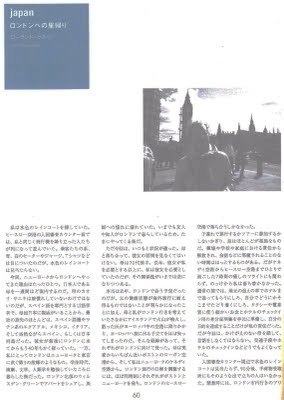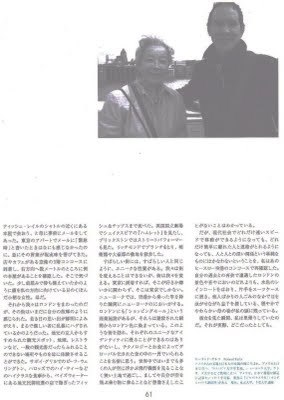Roland Kelts's Blog, page 68
August 13, 2011
Hayao Miyazaki visits tsunami-stricken Iwate (via CNN)
Hayao Miyazaki visited Iwate with Ghibli producer Toshio Suzuki last month. Also on hand was Evangelion creator Hideaki Anno--though CNN apparently felt no need to mention him.
"I thought he was a foreigner," says one girl of Hayao Miyazaki. "His skin was white, he had a long nose and a big beard. I was so surprised seeing him for the first time."
Santa Claus sans paunch?
 [Behold the Ponyo watch]
[Behold the Ponyo watch]
Hayao Miyazaki on Studio Ghibli for CNN
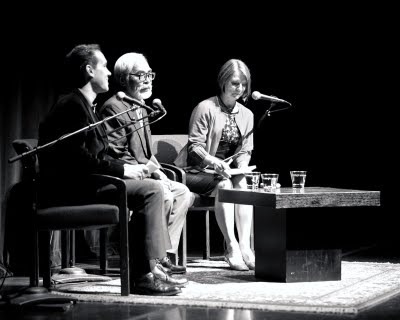 [Kelts in conversation w/Miyazaki and translator Beth Cary @ UC Berkeley, 2009]
[Kelts in conversation w/Miyazaki and translator Beth Cary @ UC Berkeley, 2009]
August 12, 2011
Can't fix this
Visit msnbc.com for breaking news, world news, and news about the economy
August 11, 2011
Hayao Miyazaki on Studio Ghibli for CNN
August 9, 2011
Hidden history: Hiroshima, Nagasaki, Fukushima
Because it shows, in color, what happened to the people in Hiroshima and Nagasaki, not just the cloud, the buildings, the landscape.
What might be happening to the people of Fukushima now--not just the landscape, the barns, the rice fields.
August 8, 2011
Returning to Tokyo, post 3-11, for CNN
 I was commissioned late last year to contribute a chapter on Tokyo to a book called "City Branding: Theory and Cases." I have lived in Tokyo for a number of years and often find myself writing about the city, or at least my version of it.
I was commissioned late last year to contribute a chapter on Tokyo to a book called "City Branding: Theory and Cases." I have lived in Tokyo for a number of years and often find myself writing about the city, or at least my version of it.As an expat who travels frequently and spends roughly half of each year living in New York, I am particularly sensitive to how Tokyo is perceived beyond its metropolitan and national borders. The opportunity to write about Tokyo as a "brand," an image, idea and product, was both disturbing and enticing. What did it mean?
The Tokyo I wrote about was a global city of superlatives -- moneyed, busy, exhausting and eerily childlike, a perverse victim and beneficiary of U.S. occupation.
Vast and largest by population, concrete-floored, steel-and-glass upholstered, one of the world's most expensive and, according to quasi-mythic reports from outer space, its very brightest urban blot.
Watching in horrorI wasn't in Tokyo on the afternoon of 3/11, when the city shook, a few of its buildings cracked, phones went down, fires lit up, and a not-so-distant nuclear power plant had a meltdown. I had flown out of Narita airport 48 hours earlier for long-booked speaking engagements on the U.S. West Coast, in New York, Washington and London.
Like millions, I watched with horror and helplessness as the images spooled across computer and TV screens: collapsing shelves in offices, commuters coursing on foot along barren rail lines, and an oozing, cancer-like wave of water that mocked human order, depositing fishing ships atop barns, in a country long-devoted to order. [cont'd @CNNgo]
Read more: Roland Kelts: Tokyo after the quake -- what matters now? | CNNGo.com http://www.cnngo.com/tokyo/life/tell-me-about-it/roland-kelts-tokyo-after-quake-what-matters-now-876963#ixzz1UVK6oqpAAugust 7, 2011
Roland Kelts Presents Pop Culture from a Multipolar Japan at Otakon 2011
@ Baltimore, MD
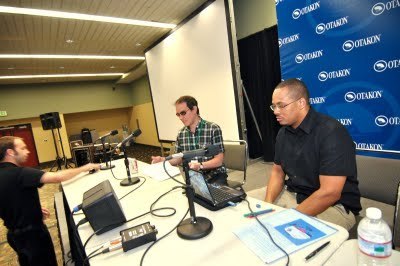 Pre-talk prepping with impeccable 'handler,' Mike Williams.[photo courtesy of Bryan P Johns]
Pre-talk prepping with impeccable 'handler,' Mike Williams.[photo courtesy of Bryan P Johns] Onstage and between the screens.[photo courtesy of Bryan P Johns]
Onstage and between the screens.[photo courtesy of Bryan P Johns]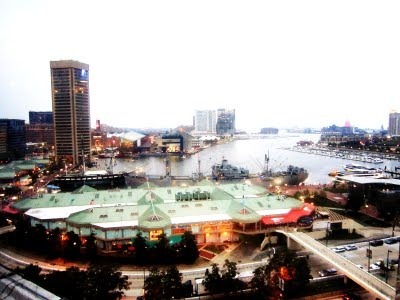 View from the hotel.
View from the hotel.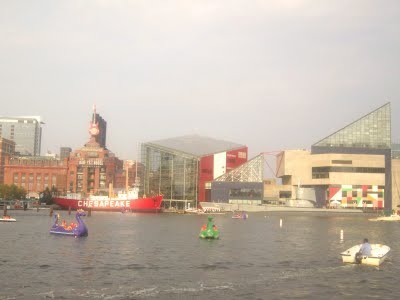 Inner harbor in the heat.
Inner harbor in the heat.
August 4, 2011
Travel column for Paper Sky, Japan
The habit of fandom - August Yomiuri column

SOFT POWER HARD TRUTHS / Cultivating the habit of fandom
Roland Kelts / Special to The Daily Yomiuri
The scene beneath my floor-to-ceiling hotel windows was epic: A parade of multicolored costumed revelers coursed across an elevated walkway in the midmorning sun, some arm-in-arm, others wielding makeshift swords and other fake weaponry, most with an obvious skip in their step.
The temperature was above 38 C, the humidity numbing, and I watched with awe and a little trepidation. They were American otaku, cosplayers, anime fans and gamers, and they were headed to the Promised Land--in this case, the cavernous Baltimore Convention Center, host of the East Coast's largest anime convention, Otakon--and they were about 31,000 strong. Soon I would be joining them.
As a guest speaker, I have now attended several anime conventions on the East and West coasts of the United States, but each time I am taken aback by the number and variety of the attendees. They are primarily young, to be sure, most appearing to be in their teens and 20s, with a backdrop of middle-aged and older folks donning civilian wear. But they are nearly equal parts Caucasian, African-American, Latino and Asian, and females now seem to outnumber fanboys. There are so many of them, and they are so excited.
Host cities benefit big-time from the cons in otherwise cash-strapped times. A local newspaper reported last weekend that Otakon brings an estimated 11.3 million dollars annually into the city of Baltimore. As I wrote in this column two months ago, the organizers of Sakuracon in Seattle calculate their contribution to that city's economy totaled 50 million dollars from 2006 to 2010.
Even so, anime and other pop culture industry skeptics point to less-than-stellar on-site sales as reasons to forgo paying for booths on the so-called dealers' floor (an unfortunate moniker that makes it sound like a narcotics den). But this seems short-sighted to me.
A majority of attendees may be mainly focused on camaraderie, celebration and showing off, but their passion is rooted in the media that first attracted them to the community. As they age, of course, they will likely have less time and more money. Attending a con may be impractical for them later in life, but the media will still be collectible. [cont'd @DailyYomiuri]

